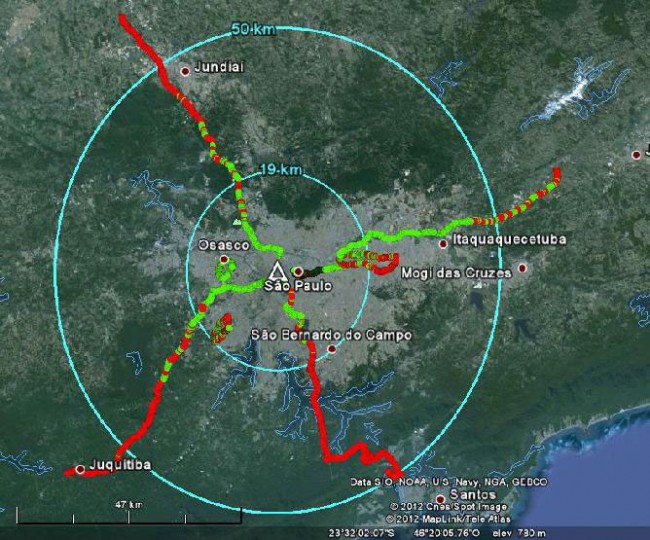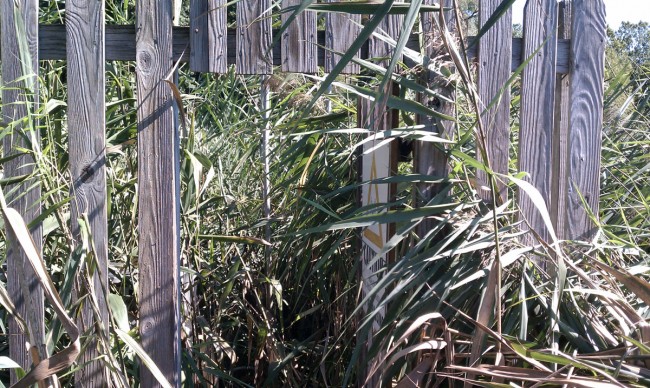After reading this article in Radio World it seems the all-digital AM testing completed last December was “nearly flawless.” This comes as no surprise considering that WBCN is owned by CBS, also an iBiquity investor. Could there really be another result? I think not. But let us examine the technical aspects of the WBCN test itself.
WBCN is on 1,660 KHz in the expanded part of the AM band. According to the FCC database, it transmits from a single 90.7 degree tower. As such, the tower is likely either broad-banded already or easily modified to be. Also according to the FCC database, there are eight other stations licensed to 1,660 KHz, all of which transmit with a power of 1 KW at night. This eliminates much of the interference issues found on the rest of the AM band. It can be further noted, the problem with electrical noise is most prevalent below 1,000 KHz. There is little wonder in the nearly flawless results.
From a technical standpoint, this is about as favorable a testing configuration as can be conceived for AM IBOC. If AM HD radio did not work under these test conditions, then it would never work at all. The actual data from the tests has yet to see the light of day and it may never be released. This is likely due to the same reason the NAB will not release its technical improvement study on AM; we simply won’t understand it.
Near the end of the article, someone (it is not exactly clear who) asks the NAB, “Why the opacity?” For which the answer given is “to get stuff done.” There is a fair bit of hubris in that statement. Is the NAB now the technology decider for the rest of us? I think not. Shutting out everyone but a very select few rightly causes suspicion, something that the Radio World article acknowledges.
Accurate, real-world testing involves more than using one technically favorable test subject. In fact, the tests should be run in the most technically challenged environment to present meaningful data points in real-world conditions. Stations like a six-tower directional on 580 KHz, a 190-degree tower with a folded unipole on 810 KHz, or pretty much any class C AM station at night time. These types of tests will represent at least a few of the existing antenna systems and stations. Will that happen? It depends on whether the FCC will hold somebody’s feet to the fire and demand meaningful testing.
Much ink has already been spilled by various trade publications debating the future of AM broadcasting. Most take the position that there are several technical issues that make AM broadcasting problematic if not downright untenable. There are indeed some technical issues with AM when compared with FM or IP-based audio distribution. There are also several ways that AM broadcasting is superior to both FM and IP-based audio distribution. The truth is that AM broadcasting’s issues are complex and involve technical, regulatory, and operational considerations.
These can be broken down as follows:
- AM is prone to electrical noise interference
- AM is prone to co-channel and adjacent channel interference
- AM has inferior bandwidth and thus the audio quality
- AM has poor signal quality
- AM has a low or no market share
All of these problems conspire to make AM broadcasting unprofitable, or so the narrative goes. Does all-digital AM HD radio really solve any of these problems? From the WBCN test alone, the results are inconclusive.
Transmitting a signal in digital format does not make it immune to noise or interference. It simply masks the interference until the noise floor becomes too high causing excessive bit errors, at which time the receiver mutes. Thus, with AM HD radio in a noisy environment, the listener will not hear static, that much is true, they may not hear anything at all. Is this all-or-nothing reception an improvement?
AM broadcasting audio bandwidth problems are mostly self-inflicted. AM stations created loudness wars in the 60s and 70s, causing splatter and adjacent channel interference on older, cheap diode detector-type receivers. Receiver manufacturers responded by limiting IF bandwidths to 3-4 KHz, slightly better than telephone quality. The industry came up with the NRSC-1 standard which limited AM bandwidth to 10 KHz or less. For a long while, AM radio receivers remained very poor. This appears to be changing with newer receivers that are both more selective and more sensitive. My Toyota has a Pioneer radio which has good bandwidth on AM. Is it as good as FM? No, but it is certainly listenable, especially if no other station is playing that style of music.
That brings me to programming, which is the real crux of the issue. Continued in part II.


